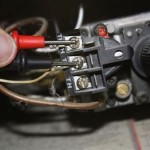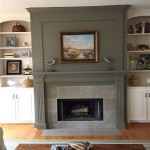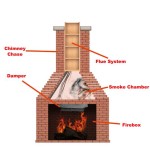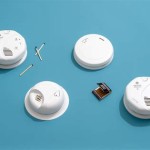Ceramic Tile Fireplace Mantels: A Durable and Aesthetic Choice
Fireplace mantels serve as a focal point within a living space, providing both decorative appeal and a practical surface for displaying personal items. While various materials can be employed in their construction, ceramic tile offers a compelling combination of durability, aesthetic versatility, and relatively easy maintenance. This article explores the characteristics of ceramic tile fireplace mantels, outlining their advantages, design considerations, installation procedures, and ongoing care requirements.
Advantages of Ceramic Tile Fireplace Mantels
Ceramic tile possesses several inherent qualities that make it a suitable material for fireplace mantels. These advantages contribute to its longevity, aesthetic appeal, and practical functionality within a home.
Durability and Heat Resistance: Ceramic tile is manufactured through a firing process at high temperatures, rendering it exceptionally durable and resistant to heat. This inherent heat resistance is critical for fireplace mantels, as they are often situated near the heat source. The material can withstand prolonged exposure to elevated temperatures without warping, cracking, or undergoing significant degradation. This durability translates into a longer lifespan for the mantel, reducing the need for frequent repairs or replacements. Furthermore, ceramic tile is resistant to scratches, stains, and fading, ensuring that the mantel maintains its appearance over time.
Aesthetic Versatility: Ceramic tile is available in a virtually limitless array of colors, patterns, textures, and sizes. This extensive range of options allows homeowners to customize their fireplace mantels to perfectly complement the existing décor of their homes. Ceramic tiles can mimic the appearance of natural stone, wood, or other materials, providing the desired aesthetic without the associated cost or maintenance requirements. The ability to create intricate mosaics or geometric patterns using ceramic tile further enhances its design flexibility. Moreover, different finishes, such as matte, gloss, or textured, can be chosen to achieve the desired visual effect.
Ease of Maintenance: Ceramic tile is a non-porous material, making it highly resistant to staining and moisture absorption. This characteristic simplifies cleaning and maintenance, as spills and dirt can be easily wiped away with a damp cloth or mild cleaning solution. Unlike natural stone, ceramic tile does not require sealing to protect it from stains. The smooth surface of most ceramic tiles also prevents the accumulation of dust and allergens, contributing to a healthier indoor environment. Routine cleaning is typically sufficient to maintain the appearance and integrity of the mantel.
Cost-Effectiveness: Compared to some other materials commonly used for fireplace mantels, such as natural stone or hardwood, ceramic tile can be a more cost-effective option. The material itself is often less expensive, and the installation costs can also be lower, depending on the complexity of the design and the size of the mantel. Furthermore, the durability of ceramic tile translates into lower long-term maintenance and replacement costs, making it a financially sound choice for homeowners.
Design Considerations for Ceramic Tile Fireplace Mantels
Planning and design are crucial aspects of creating a ceramic tile fireplace mantel that is both aesthetically pleasing and functionally appropriate for the space. Several factors need to be carefully considered to ensure a successful outcome.
Style and Compatibility: The design of the ceramic tile mantel should harmoniously integrate with the overall style of the room. For instance, a traditional room might benefit from a mantel featuring classic shapes, such as bullnose edges and ornate details, executed in ceramic tiles resembling marble or other natural stone. Conversely, a modern or contemporary space might call for a simpler, more minimalist design with clean lines and geometric patterns, perhaps using large-format ceramic tiles in neutral colors. The color palette of the tiles should also complement the existing wall colors, flooring, and furniture.
Size and Proportion: The dimensions of the mantel should be proportional to the size of the fireplace and the room in which it is located. A mantel that is too large can overwhelm the space, while one that is too small may appear insignificant. The height of the mantel should also be considered, as it can affect the visual balance of the fireplace. It is recommended to measure the fireplace opening and the surrounding area to determine the optimal dimensions for the mantel. Consider the height of the ceiling and the overall scale of the room when making these decisions.
Tile Selection: The choice of ceramic tile will significantly impact the appearance and performance of the mantel. Consider the size, shape, color, texture, and finish of the tiles. Smaller tiles can be used to create intricate mosaics or patterns, while larger tiles can provide a cleaner, more modern look. The color of the tiles should complement the surrounding décor, and the texture can add visual interest and depth. The finish of the tiles can affect the reflectivity and maintenance requirements of the mantel. Matte finishes tend to be more slip-resistant and less prone to showing fingerprints, while gloss finishes can create a more polished and reflective surface.
Structural Support: It is essential to ensure that the mantel is adequately supported. Ceramic tile itself is not a structural material and needs to be applied over a sturdy framework. This framework is often constructed from wood or metal studs and sheathed with cement board, which provides a stable and moisture-resistant surface for the tile. The design of the framework needs to account for the weight of the ceramic tile and any items that will be placed on the mantel. It is recommended to consult with a qualified contractor or structural engineer to ensure that the framework is properly designed and installed.
Installation and Maintenance of Ceramic Tile Fireplace Mantels
Proper installation and regular maintenance are essential for ensuring the longevity and aesthetic appeal of a ceramic tile fireplace mantel. These processes contribute to the mantel's structural integrity and visual performance over time.
Installation Process: The installation process typically involves several steps. The first step is to construct a sturdy framework for the mantel, using materials such as wood or metal studs and cement board. The cement board provides a suitable surface for the tile adhesive to bond to. Next, the ceramic tiles are carefully laid out and measured to ensure proper alignment and spacing. A thin-set mortar adhesive is then applied to the cement board, and the tiles are pressed into place. Spacers are used to maintain uniform grout lines between the tiles. Once the mortar has dried, the grout is applied to fill the gaps between the tiles. Excess grout is wiped away with a damp sponge, and the grout is allowed to cure according to the manufacturer's instructions. Finally, the mantel is sealed to protect the grout from staining and moisture.
Grouting Techniques: The choice of grout color and type can significantly impact the overall appearance of the mantel. Grout is available in a wide range of colors, and the color should be chosen to complement the ceramic tiles. Epoxy grout is a more durable and stain-resistant option than cement-based grout, but it is also more expensive and difficult to apply. The grout lines should be carefully cleaned and sealed to prevent staining and moisture absorption. Proper grouting techniques are crucial for creating a professional and long-lasting finish.
Cleaning and Maintenance: Regular cleaning is essential for maintaining the appearance of a ceramic tile fireplace mantel. The mantel should be dusted regularly to remove any accumulated dirt or debris. Spills and stains should be wiped away immediately with a damp cloth or mild cleaning solution. Abrasive cleaners should be avoided, as they can scratch the surface of the tiles or damage the grout. The grout lines can be cleaned with a grout brush and a mild cleaning solution. Sealing the grout can help to prevent staining and make it easier to clean. The sealant should be reapplied periodically, according to the manufacturer's instructions.
Repairing Damages: While ceramic tile is durable, it can be susceptible to chipping or cracking if subjected to impact. If a tile becomes damaged, it can be replaced. The damaged tile should be carefully removed, and any remaining adhesive should be scraped away. A new tile should be cut to the correct size and shape, and then adhered to the cement board using thin-set mortar. The grout lines should be filled with matching grout, and the grout should be allowed to cure properly. For more extensive damage, it may be necessary to consult with a professional tile installer.

Fireplace Tiles Classique Floors Tile Portland Or
Fireplace Tile Surround 5 Decorative Mantel Tiles 2024

How To Tile A Fireplace My Uncommon Slice Of Suburbia

14 Fresh Designs For Tiled Fireplaces Bob Vila
Fireplace Tile Surround 5 Decorative Mantel Tiles 2024

Fireplace Tiles Classique Floors Tile Portland Or
Trend Watch Tile Fireplace Surrounds

Planning A Tile Fireplace Budgeting Design Diy Vs Pro
These Tiled Fireplaces Are Swoon Worthy Tileist By Tilebar

Remodeling A Fireplace With Tile
Related Posts








